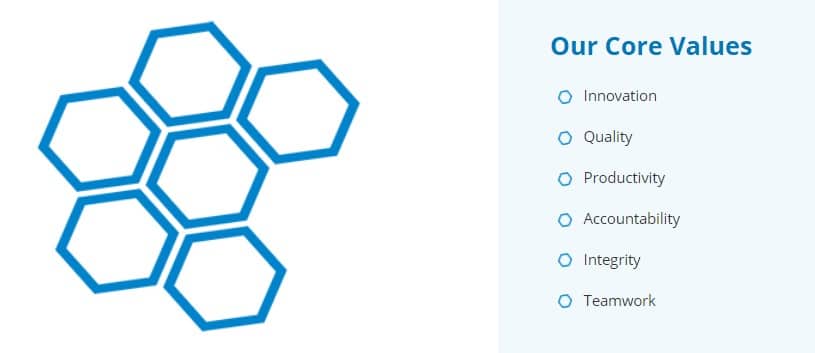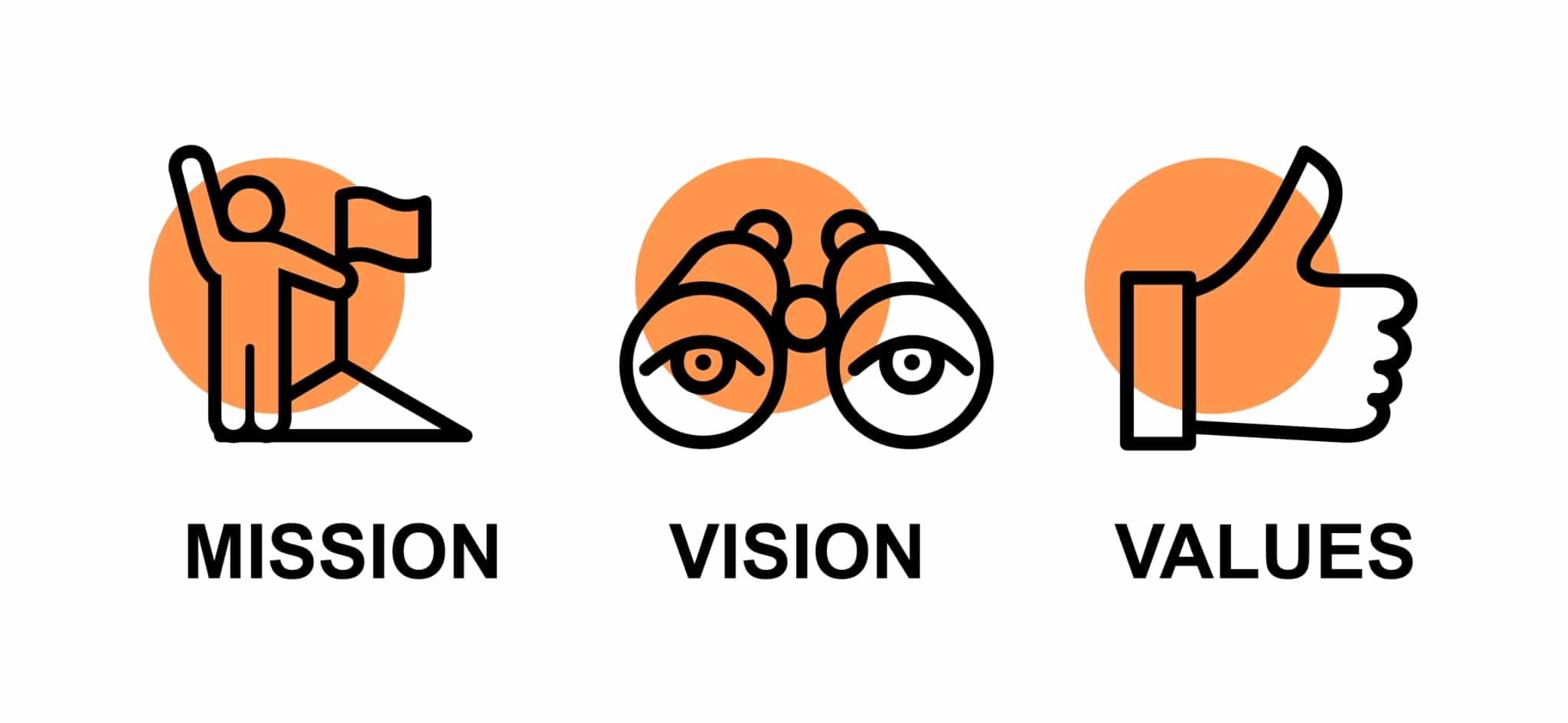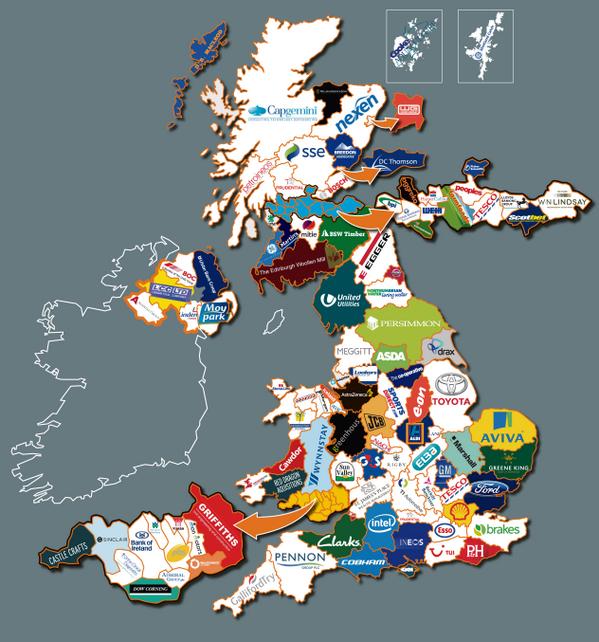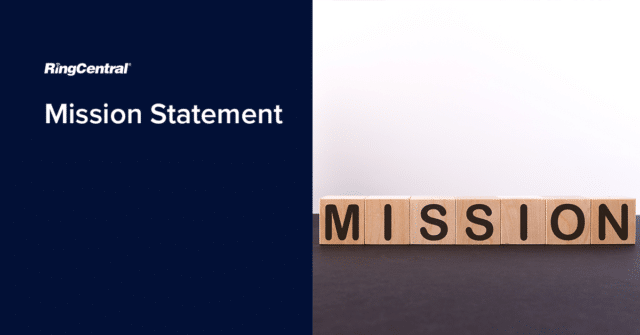Things are not always as obvious as you might expect. You may see a business advertised on TV or the internet and wonder, “what exactly do they do?”. Yes, they may sell a certain range of products, but what do the business’s owners or managers want to achieve beyond selling those products? Having the best product is only part of your story.
Especially in eCommerce, it can help have a clear definition of what a company does and its aims.
If you visit a company’s website, you will nearly always see it listed as one of the menu options “Mission statement and vision”. But what exactly is a mission statement? Why do you need one? How does it differ from the company’s vision? And, as a new company, how do you go about making your company’s mission statement one that best reflects your hopes for the business?
Mission Statement Definition
A good definition is as follows:
“A mission statement is used by a company to explain, in simple and concise terms, its purpose(s) for being. The statement is generally short, either a single sentence or a short paragraph.”
Your mission statement should not only let potential and existing customers understand your reason for being, but it should also act as a guide to your employees. It should allow them to concentrate on any tasks with a mind to the direction you want the business to move in.
Why Do Businesses Need a Mission Statement?

Does your business really need a mission statement? The answer to that is an emphatic ‘yes. In some ways, you can think of your mission statement as a sort of foundation that guides how you do business and how you address change. In particular, there are four excellent reasons for having one:
-
Decision making
Within your organization, you are making decisions every single day of the working year. Some of those may be relatively small decisions, but others may be bigger ones that can have a major impact on the direction of your company. Your mission statement acts as your guide in decision making, almost like a silent advisor. Good planning in management is essential.
The mission statement, too, acts as an aid in reflecting on actions and decisions already made by you or your employees. Looking back and seeing how those decisions fitted with your declared mission statement can help make the future decision-making process more aligned to your goals.
-
Direction
You can also think of your mission statement as a signpost. It gives a clear definition of the direction you want the company to move in, what you want to achieve as an organization, and the objectives you expect your employees to aim for, thus improving their sense of well being. It should also act as a reference point when deciding on strategic planning.
Effective mission statements should give customers and employees a clear idea of that direction and your very raison d’être. It gives an idea of why you are doing what you do. That why it is often more important than the what. Business owners can act as a reminder as to why they started the business in the first place.
-
Nurtures change
Anyone who has been in business for any amount of time will acknowledge that there have been times they have had to change. Change how they sell, communicate with customers, and adapt to the changing needs of their target demographics. Change is not only necessary. It can also be the key to survival and success.
A solid mission statement can serve as a reference point that can nurture change while remaining true to the original vision of the company’s founder(s). It can help both managers and employees to have a ‘destination’ in mind while focusing on any needed changes. This is true whether you’re a major corporate body, a healthcare provider, or any other kind of business.
-
Communication

Your mission statement serves an important purpose within your organization, but it is equally important outside those ‘four walls’. Having a clearly defined mission statement lets your customer base – and the wider general public – know exactly what your company wants to achieve.
By sharing your mission statement on your website, on your social media platforms, and even on all documents (invoices, brochures, business cards, etc.), people can come to understand what you see your organization’s goals as being, what your focus is, and where that vision fits in with your growth and how you do business.
For customers, that can help them understand what you want – or plan – to do for them. For example, if the statement is that you want to make the best hiking boots on the market, they know what to expect. And for employees, it can help them to see the direction you want the company to take.
What Is The Difference Between Mission and Vision Statements

People often get confused between mission and vision statements, even when both are listed on a company’s website. The mission statement seeks to outline what an organisation does, its goals, and its plans to reach its full potential. A vision statement encompasses where the founders or owners want to see the business at some point in the future.
The development process for both can often involve input from several levels, including owners, senior management, and even managers at ‘lower’ levels if a company has different departments or divisions. But there are several factors to be included when developing both mission statements and visions:
- Identification of the organisation’s culture, values, strategies, and future positioning.
- Possible input from not only managers but also employees, customers, stakeholders, and even communities.
- Making sure that you can measure any stated objectives and that any vision is realistic and achievable.
- Ensuring all messages are clear and are communicated in simple and easy to understand language to be accessible to all.
How Long Should a Mission Statement Be?
As with many things, there is no one correct answer to this. However, there are certain parameters you should examine before writing one for your own organisation. If you are planning a mission statement, it helps look at what other companies have done, particularly those operating in your industry. A study of 200 mission statements found some interesting facts:
- 82% of statements focused on intentions without mentioning actions.
- The average length of mission statements over 200 was 29 words. Bigger organisations tended to use longer statements.
- Certain words were commonly used, including; “mission”, “value”, “customers”, “services”, “technology”, and “products”.
- 85% of statements mentioned being dedicated to customers.
- 37% of statements mentioned being dedicated to shareholders.
- Only 21% of statements mentioned being dedicated to employees.
If you are writing a mission statement, try to keep it between two and four sentences and a maximum of around 100 words. Above all, though, make sure to communicate your point clearly. It will likely be the case that your initial attempts may come up too long or too short. Do not be afraid to edit and tweak.
A good mission statement can help clarify the entire purpose of your business, and this clarity can be part of the solution to improving customer experience.
Tips for Creating an Effective Mission Statement

So, you have launched a new business, and you now want to write a good mission statement that clearly tells people the message you want to communicate. What sort of things should you include? The first thing to focus on is that many experts see the mission statement as having four main elements:
- The company’s value. What is the actual value of the organisation to its employees and its customers?
- Your inspiration. What about your company would make people want to work for it? And indeed, what would attract customers?
- Believability. Make your statement sound plausible. Do not make unachievable claims.
- Be specific. Your mission statement should have clear and understandable links to your business and what it does.
Five top tips
- Keep it as short as you can. You are not writing a long-form article but rather something that helps identify and build your brand. You want something that people easily remember.
- Don’t think short term. You want to create a mission statement that encompasses your long term plans for the business. Think about what your goals are in the long term, not just the short term.
- Do not limit yourself. There is little point in limiting your statement, either geographically or even in your market. You will have hopes for expanding any current limitations on your business, including that concept in your statement.
- Get feedback. As you work on your statement, get feedback from employees and managers. They are part of your statement’s focus, so ask what they think of it.
- Don’t fear change. There may come the point when your company undergoes a fundamental change. That change may not be covered by your initial mission statement, so do not alter the statement to fit those changes.
How to Write a Mission Statement

What your mission statement actually says will depend very much on what it is you do and what you hope to achieve. But while there may be some variation in statements between, for example, an NGO promoting literacy and a large footwear corporation, the structure of your statement should be intrinsically similar.
When writing a mission statement, it helps to make some initial notes before starting on it. It may also help if you do this as a group activity with some senior managers or similar (marketing team members would be of huge benefit). Brainstorming ideas in a small group may help give more clarity when constructing your final statement. Consider the following factors before working on your statement:
1. Purpose.
Your mission statement should include detail on the company’s purpose. You do not need to elaborate; remember you are working with a restricted amount of words. If you make footwear, you could include something like “making the highest-quality walking boots”.
2. Action.
This can be a complicated element, but essentially, you want to tell people how your business operates. That could include, for example, adding some of your core values to the statement. Please list what you see as your key core values and work them into the statement. These could include things such as:
- High quality of all products
- Environmental aspects (materials from sustainable sources, protecting the ecosystem, etc.)
- Corporate sustainability
- High levels of customer service.
3. Reasoning.
So we have what you do and how you do it, but people also want to know WHY you do it. Why did you start your company? Why did you choose the sector you are working in? For example, an educational non-profit NGO in Africa may use “providing free books to improve literacy rates”.
Once you have finished writing your statement, or at least version one of it, test it out with employees and managers and even some of your customers (if you have some at this stage). Getting a wide range of feedback can be crucial in coming up with that great mission statement.
Then, it’s up to you to get it out there! You want the statement to be the thing people think of every time your brand is mentioned or see an ad. Your mission statement should lie at the heart of their decision to buy from you or do business with you for both potential partners and potential customers.
Mission Statement Examples From Real Companies

As mentioned earlier, one perfect way of starting the mission statement writing process is to look at what other organisations have used as theirs. It is also a good idea to split this research into two sections. Firstly, look at some good mission statements of the world’s most successful companies. Then look at the mission statements of companies operating in your sector.
By doing this, you get a better idea of what works in a general sense and what works for your competitors. This by no means suggests plagiarising, but by examining other statements and taking on board the suggested elements and tips, you can create a good initial template to help you start on your own.
To help you start on your mission statement writing journey, let’s look at some of the great examples of mission statements used by some of the world’s biggest companies.
- American Express: We work hard every day to make American Express the world’s most respected service brand.
- IKEA: To create a better everyday life for many people.
- TED: To spread ideas.
- Starbucks: To inspire and nurture the human spirit—one person, one cup, and one neighbourhood at a time.
- Southwest Airlines: Dedication to the highest quality of Customer Service delivered with a sense of warmth, friendliness, individual pride, and Company Spirit.
- Tesla: To accelerate the world’s transition to sustainable energy.
- LinkedIn: To connect the world’s professionals to make them more productive and successful.
- Nordstrom: To give customers the most compelling shopping experience possible.
- PayPal: To build the web’s most convenient, secure, cost-effective payment solution.
- Amazon: To be Earth’s most customer-centric company, where customers can find and discover anything they might want to buy online, and endeavours to offer its customers the lowest possible prices.
- Microsoft: To enable people and businesses throughout the world to realize their full potential.
- Uber: Uber is evolving the way the world moves. By seamlessly connecting riders to drivers through our apps, we make cities more accessible, opening up more possibilities.
- Patagonia: Build the best product, cause no unnecessary harm, use business to inspire and implement solutions to the environmental crisis.
As you can see, there is some variation between short statements such as Ikea and longer ones such as Disney or Uber. While we stated a rule of 100 words maximum, it is also worth remembering that 29 word average from the study of 200 companies. The longest ones on our list of examples all fall close to that 29-word mark.
RingCentral

It is also worth looking at RingCentral’s own mission statement. It remains well within that 100-word limit, but it communicates all the elements that have been discussed:
“We are reimagining the world of communications by breaking down barriers and empowering businesses across the globe to work as one. Our rapid growth and journey to global industry leader are largely thanks to our number one asset—our people. That’s why we invest heavily in a dynamic and diverse company culture that creates amazing job opportunities.”
A mission statement, crucial as it is, is only one small part of building your company. Having the right tools to do business and communicate with your customers can be just as crucial. RingCentral’s cloud phone system for retail businesses offers omnichannel support that connects you with your customer base as efficiently as possible and helps create a compelling shopping experience.
It allows you to integrate with existing in-house systems such as your CRM apps, thus allowing you to get context on any existing customers who call. It can also allow you to connect with customers via multiple portals, including social media, SMS, phone, live chat, etc. The seamless service and integration are ideal for any small business or larger organisation.
RingCentral’s cloud phone system allows you to take the customer service experience to a whole new level, one that will delight both your customers and staff. Why not request a demo today by visiting our page HERE?
Originally published Jul 12, 2021

